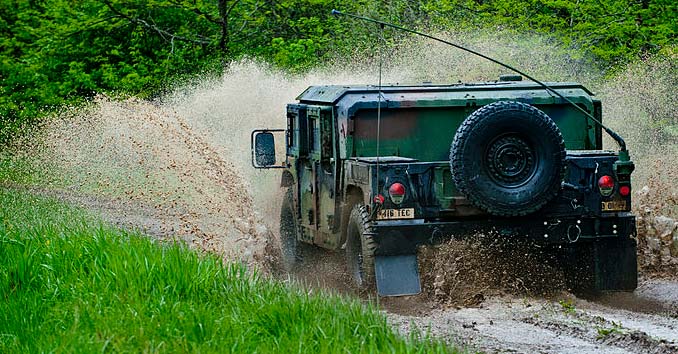
You have a bugout bag, your home is ready for disasters, and you have planned for the worst case scenario; but what about your vehicle?
From preparing for everyday vehicle problems and breakdowns to preparing your vehicle for quick evacuations during times of crisis, vehicle-related preparedness is an important topic that you can’t afford to ignore. When seconds count, your bug out vehicle needs to be ready and able to go at a moment’s notice.
Turning your Vehicle into a Bug Out Ready Vehicle
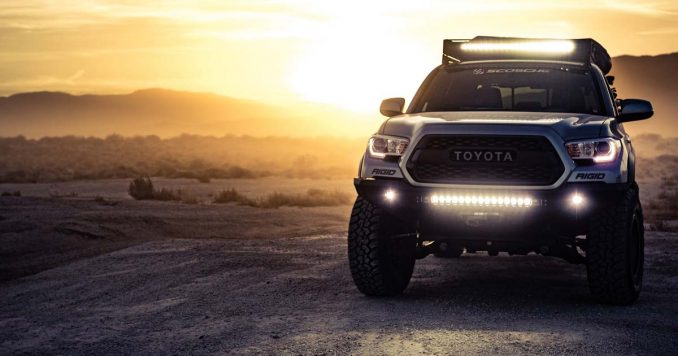
While you could go out and buy a dedicated bug out vehicle, for the purpose of this article we are going to look at things you can do to prepare your current vehicle for disasters.
Yes, a dedicated 4-Wheel Drive Bug Out Vehicle would be nice – and if you have the money then, by all means, go ahead and invest in one – but the fact is disasters rarely happen when you’re expecting them. Unless your bug out vehicle is your everyday driver, you need to prep all of your vehicles as if they are the one you will be using when disaster strikes.
Regular Preventative Maintenance.
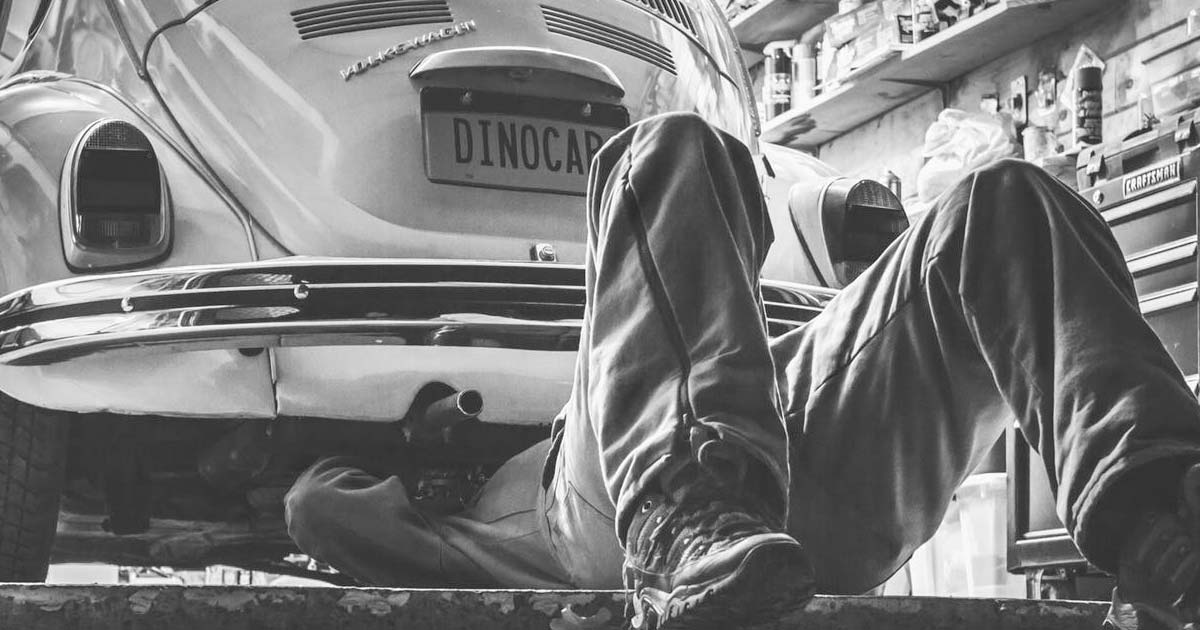
Those who have been driving long enough can tell you that a car doesn’t have to be a clunker to break down on the road, and it can happen at the most inopportune times. Thankfully, cars are far more reliable than years back, but prepping for what might happen is smart because you don’t want a breakdown to turn into its own survival challenge.
The first thing you need to focus on is your vehicle’s ability to make it out during a disaster; which means you need to stay on top of your vehicles regular maintenance.
- Daily Checks: Before getting on your vehicle in the morning, it’s a good idea to do a quick walk around. Look at the tires, check for leaks, and look for anything that looks out of the ordinary.
- Monthly Checks: At least once a month you should be checking things like your oil, transmission fluid, tire pressure and other vehicle fluids.
- Never let your gas tank fall below half a tank. When disaster hits, you need to be able to evacuate as quickly as possible. The last thing you want to do is get stuck in a long line at the gas station, so ideally your gas tank should never fall below half a tank.
Stock up on the Essentials

At the very least, you should be carrying either a dedicated Bug Out Bag or Get Home Style Bag in your vehicle at all times. Because your vehicle gives you the ability to carry even more than you would normally be able to fit into one of these bags, there are some vehicle specific things that you might want to consider.
- Water: The average person goes through about a gallon of water per day. Water should be one of the first things you stockpile inside your vehicle. I advise carrying a couple of these Heavy-duty Aqua-Tainer 7 Gallon Containers
in your trunk.
- Food: Quick and ready to eat foods like pop-top canned goods, granola bars, and high-calorie energy bars are all things that can sustain you during an evacuation. Throw in some sugar packets, a couple of bags of nuts, and some hard candy and you have yourself a great source of instant energy, and a good way to improve your mood.
- First Aid Kit: Your vehicle should have a good dedicated first aid kit, filled with the essentials for treating minor injuries, burns, and wounds. Check out my list of things you should include in your emergency medical kit.
Invest in a good Emergency Road Kit
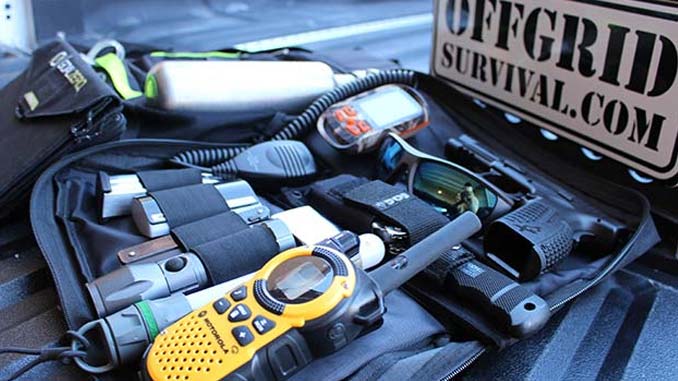
On top of your regular emergency gear bags, you should have a vehicle specific preparedness kit. The kit should be filled with all of the tools you need for roadside emergencies and vehicle breakdowns.
Some Vehicle Specific items that you may want to consider include:
- A Floor Jack
– If you have the room to spare, than I suggest swapping out the crappy little jack that came with your car and replace it with a solid floor jack. It’s safer, and a hell of a lot easier out on the road.
- Jumper cables and an Emergency Car Battery Jump Starter. I like the Stanley Jump Starter
because it not only jump starts your battery, but it also has a compressor to fill flat tires and ports for charging cell phones, communication gear, laptops, and tablets.
- Spare Fuses, extra oil, antifreeze and vehicle fluids.
- Spare Hoses & Fan Belts
- Tire Pumps, Patches & a can of Fix a Flat
- A Power Inverter
- A properly inflated spare tire (preferably a full-size tire)
- Jerry Gas Can
with extra fuel (preferably stored outside the vehicle)
- A shovel and piece or carpet or traction material. Combined with the floor jack, these can be used to get you out of snow, sand, and mud.
- Fire extinguisher
- A Good Tow Cable: A tow cable is a good idea, for being a good Samaritan or in case you need someone to be one for you.
- Trac-Grabber Traction Devices – These trac-grabbers are awesome, and they are essential to every good roadside kit. If the worst happens and you find yourself stuck snow, sand, or mud these will help you free yourself and get you back on your way
- A Skateboard – If your car is toast, and you end up stuck in an urban area, a skateboard doesn’t take up a lot of room and can be a great way to make it through a city quickly. *and something I know from my younger days, they can make a hell of a self-defense tool in a pinch!
Emergency Navigation Gear & Maps: In today’s world of electronic gadgets and mapping Apps, navigation is something that most people don’t have to think about on a daily basis. But when it comes to emergency preparedness planning, the subject of navigation is something that needs to be taken into consideration. Make sure you have maps of your local area, maps of your evacuation routes, and a good nationwide road atlas in your vehicle.
Communication & Signaling Gear:
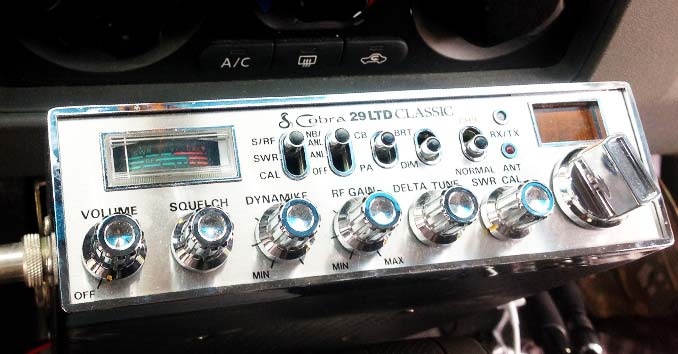
During most disasters, there is a very high likelihood that most communication channels will go down. Hopefully this will only be temporary; but either way, you need to plan for the worst case scenario and have multiple ways to communicate available in your vehicle.
- Cell Phone & Car Charger: During a large-scale disaster, cell networks will probably be the first thing to go down. That being said, you should always have a fully charged phone and an extra car charger at all times.
- Satellite Phones: If you can afford one, Sat Phones don’t rely on local cell networks, so they’re less likely to be affected by an increase in call volume or network outages.
- CB Radios: A CB Radio is an excellent way to communicate if you’re traveling with a group of vehicles. They are also great for local communication and finding out local road conditions from truckers driving in the area.
- Ham Radio: When everything else goes down, a good multi-band ham radio will allow you to hear broadcasts and communicate with people both locally and around the world.


